Clippers' history: After years of ineptitude, franchise finally getting its day in the sun
When he purchased the team in 1981, Donald Sterling ran ads that proclaimed, "My Promise: I will make you proud of the Clippers." But there has been little to be proud of.
For most of Sterling's 33 years of ownership, the Clippers were the NBA’s most beleaguered franchise, a monument to mismanagement and misfortune. It didn’t help that they’ve been playing in the shadow of the league’s most glamorous franchise in the Lakers.
But a Clippers franchise once synonymous with losing, mismanagement and ineptitude on every level — in the 1980s they were widely considered the worst-managed franchise in professional sports — is finally having their day in the sun.
The Clippers started the postseason by losing the first two games at home to the Dallas Mavericks. Then they trailed 30-11 in the first quarter of Game 3. Cue the "Same old Clippers" rendition. Except, these Clippers showed they were not those Clippers.
The Clippers overcame a second 0-2 hole to the Utah Jazz and won an improbable four consecutive games, including two without Kawhi Leonard, and are now in the Western Conference finals for the first time.
Here’s a look at the highs and most lows in the franchise’s 51-year history.
NBA expansion wave
The Buffalo Braves joined the NBA in 1970 in the fourth wave of expansion that began in 1966 with the Chicago Bulls. The Braves entered the league with the Portland Trail Blazers and Cleveland Cavaliers. Eventually, the Braves would bring in Jack Ramsey as head coach, and he was in charge as Buffalo rose from expansion mediocrity into one of the most electrifying teams of the mid-1970s, led by MVP Bob McAdoo.
Brave new world
In 1978, Braves owner John Y. Brown Jr. and Celtics owner Irv Levin traded teams. Levin, a California businessman, then moved the Braves to San Diego and renamed them the Clippers.
Levin was unpopular in Boston. And the Braves had little popularity in Buffalo, even with the electrifying McAdoo. The team was the No. 3 tenant in The Auditorium and were forced to play 16 home games in Toronto at Maple Leafs Garden.
Donald Sterling purchases team
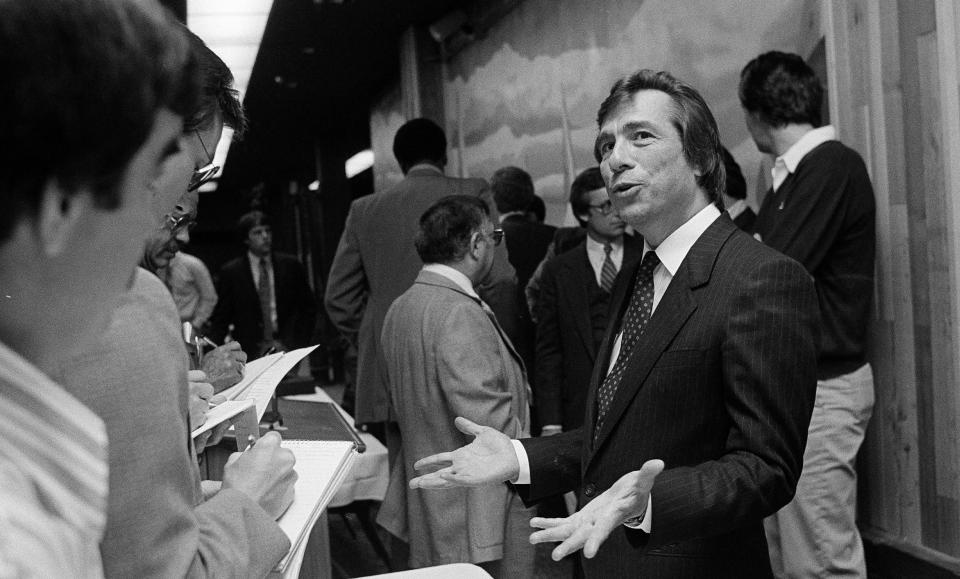
Sterling essentially got the Clippers for free; he agreed to pick up the $13 million the San Diego Clippers owed in deferred salaries. He said at an introductory press conference that he would spend "unlimited sums" to build the Clippers into a winner. Instead he was often referred to as the "Granddaddy of Bad Owners."
Where to start? In the 1980s, the Clippers routinely violated a collectively bargained requirement to seat players in first class for flights lasting longer than two hours. Sterling once slashed the previous season's budget by $1.7 million, including a training camp free-fall from $52,504 one season to $120. (That would be the equivalent of slashing the team’s budget by about 25% in today’s NBA.) Jim Lynam, the last coach in San Diego, once said Sterling tried to back out on his initial two-year contract by cutting it in half. Sterling relented only after Lynam threatened to walk away.
Moving to Hollywood
In May 1984, Sterling moved the Clippers to Los Angeles, the home of his real estate empire. That led to a $25 million lawsuit by the NBA for moving without permission. The NBA Board of Governors debated whether L.A. was an appropriate market for a second NBA franchise, and if so, if that team should have been the Clippers or an expansion franchise.
Draft Lottery parties
Some have argued that the franchise’s best moments were the fancy draft-lottery parties that Sterling threw each year in Beverly Hills. The Clippers picked in the lottery for each of Sterling’s first 10 years of ownership. It didn’t help that they often drafted poorly. They drafted Bryon Scott with the No. 4 pick in 1983 and traded him to the Lakers for Norm Nixon, who played three seasons with the Clippers before missing back-to-back seasons with knee and Achilles injuries. In 1984, they selected Louisville’s Lancaster Gordon with the No. 8 pick. He lasted four years in the NBA and averaged 5.6 points a game. In 1985, they selected Benoit Benjamin with the No. 3 overall pick, passing over such future Hall of Famers like Chris Mullin, Karl Malone and Joe Dumars.
Manning, then Harper sustain knee injuries

Just when it looked like the Clippers could be turning the corner, former No. 1 pick Danny Manning and Ron Harper, who they traded for in the Danny Ferry draft fiasco, both suffered season-ending ACL tears one year apart. Manning, the No. 1 overall pick in 1988, suffered an ACL tear on Jan. 4, 1989 — just 26 games into his rookie season. The next season, Harper, the team’s leading scorer who was acquired from Cleveland when 1989 No. 2 overall pick Danny Ferry refused to play for the Clippers, suffered a season-ending injury on Jan. 17 of the next year.
Move to Staples Center
In 1999, the Clippers moved from the dingy L.A. Sports Arena to Staples Center, joining the Lakers and the NHL’s Los Angeles Kings. In sharing the building with other tenants, such as the more popular Lakers, the Clippers were often overshadowed and had to contend with seeing the Lakers’ championship banners.
A no-brainer draft pick
Finally, the Clippers had a draft scenario that they couldn’t screw up. With the No. 1 overall pick in 2009, the Clippers picked the sure thing: Blake Griffin of Oklahoma. He was the consensus college player of the year after leading the nation with 14.4 rebounds per game while averaging 22.7 points in his final season at Oklahoma. The Clippers made it clear they would take Griffin hours after they won the draft lottery and stuck with the pick. Even though he missed his first season with a broken left kneecap, Griffin ushered in the best era in franchise history.
Getting serious with Chris Paul
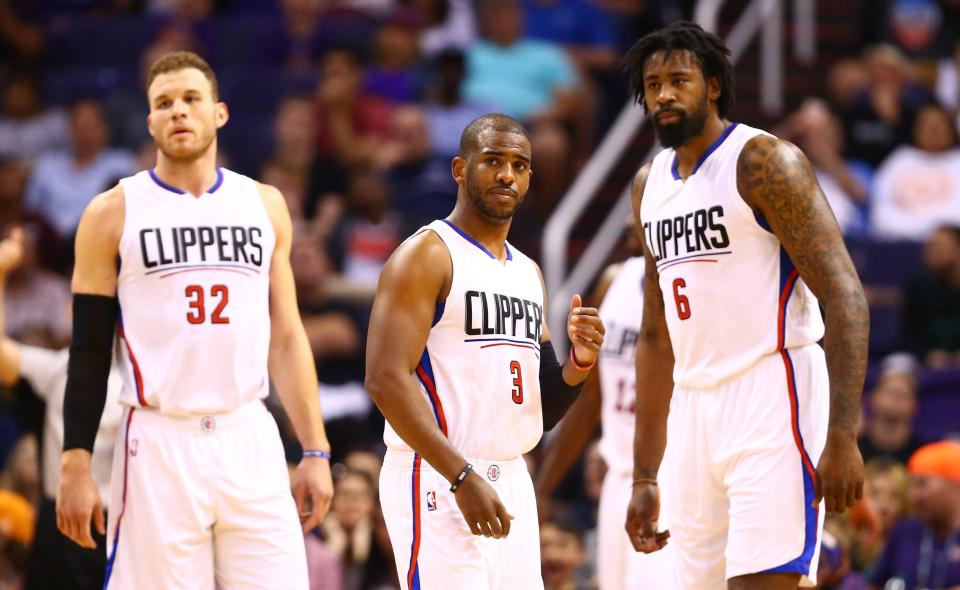
The Clippers traded for Paul in Dec. 14, 2011, only six days after NBA Commissioner David Stern nixed a deal that would have sent him from New Orleans to the Lakers. With Paul joining Griffin, the Clippers finally had the star power to compete with Kobe Bryant, Pau Gasol and the Lakers. The Lakers tried to acquire Paul in a three-team deal the week before, but Stern, acting as the Hornets’ de facto owner, rejected the deal. The acquisition of Paul ignited the Clippers’ celebrated "Lob City" era, with Griffin and DeAndre Jordan. But their six-year partnership produced three first-round playoff exits and three second-round playoff exits.
Acquiring a coach for a draft pick
For the right to land Doc Rivers as coach in the summer of 2013, the Clippers agreed to send the rebuilding Celtics a first-round draft pick in 2015. The Clippers also agreed to take on the final three years and $21 million of Rivers’ contract. The $7 million annual salary was a huge leap for the usually frugal Donald Sterling. But it perhaps signaled that the Clippers might be serious about being a title contender.
Rivers famously plotted out the Clippers’ parade route upon his arrival. He also had the Lakers’ 17 championship banners and 10 retired jerseys covered during Clippers home games, replaced with his players’ banners.
Donald Sterling forced out
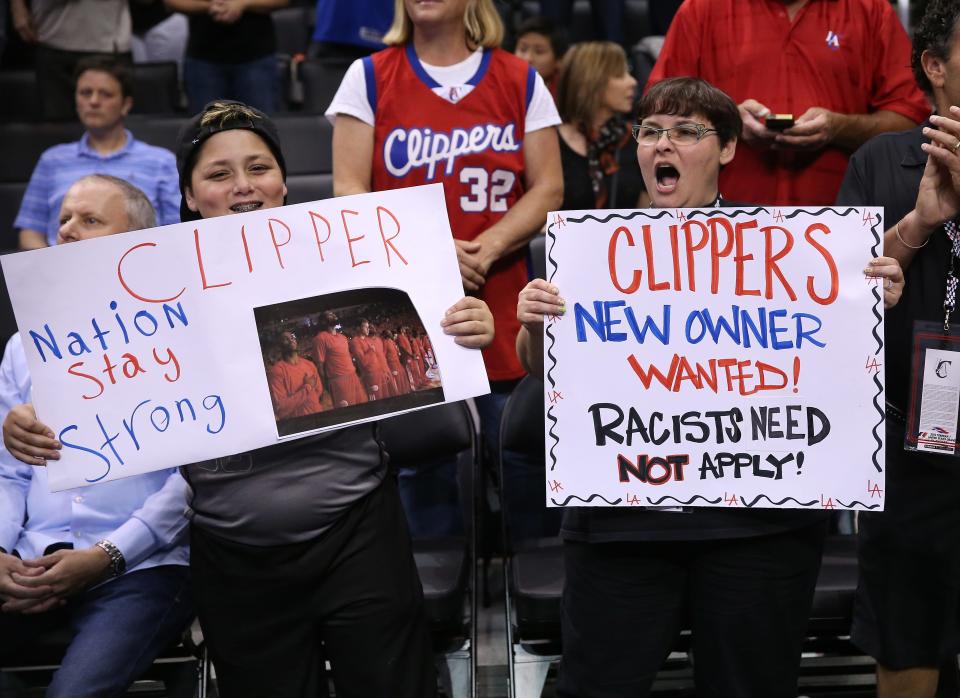
After an audio recording surfaced of Sterling making racists statements, NBA Commissioner Adam Silver made a bold and unprecedented move to ban Sterling from the league for life and force him to sell the team. Sterling was also fined $2.5 million, the maximum allowable under the NBA’s constitution. It was among the harshest rebukes ever given to an owner of a pro sports franchise.
Silver’s decision came just three days after TMZ released a tape of Sterling admonishing his girlfriend for posing for pictures with Black people, and telling her not to bring Black people to Clippers games.
Players threatened to boycott league games and several sponsors suspended their relationship with the Clippers. After Silver’s quick action in the days following the recording’s release, many of the sponsors returned.
Steve Ballmer purchases Clippers
After failing to acquire the Sacramento Kings and move them to Seattle the year before, Ballmer, the former chief executive at Microsoft, was able to purchase the Clippers in 2014 for $2 billion, a then-record price for an NBA team.
The sale price would be almost four times the previous NBA franchise high: the $550 million paid in May 2014 for the Milwaukee Bucks. It would be the second-highest price ever paid for a sports team in North America. The Dodgers sold in 2012 for $2.1 billion.
Clippers center DeAndre Jordan wrote on Twitter: "Thank You! And welcome."
Clippers blow 3-1 lead, Part 1
It looked as if the Clippers were finally on their way past the second round of the postseason, but this being the Clippers … they were cruising against the Houston Rockets in the 2015 Western Conference semifinals. They won Game 3, 124-99. They won Game 4, 128-95. Then the wheels came off.
James Harden had 26 points in Game 5 to lead the way for Houston, then the Rockets outscored the Clippers 40-15 in the fourth quarter on the road in Game 6 to turn around a 19-point second half deficit. Harden added 31 more points in Game 7, and the Clippers never led en route to the loss.
Clippers land Kawhi Leonard, Paul George
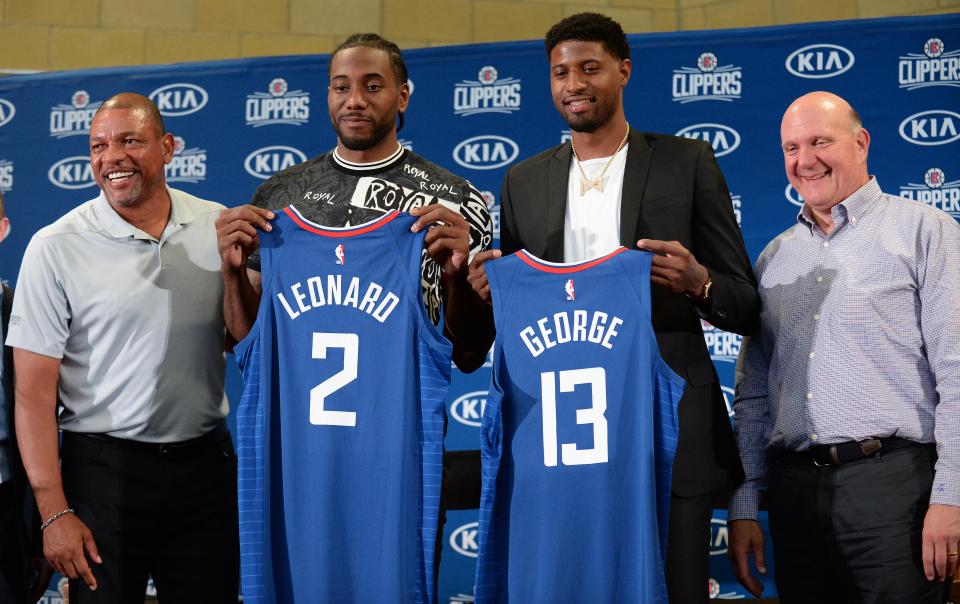
In one fell swoop, the Clippers were magically transformed into a title contender. First, the Clippers made a stunning trade for All-Star Paul George. Then Kawhi Leonard rebuffed the Lakers, a franchise accustomed to being a preferred landing spot for the NBA’s elite talent, to sign a free-agent deal with the Clippers.
The signing of Leonard, a Southern California native, was a watershed moment for the Clippers. He represented the first marque player to arrive on the Clippers’ doorstep with an actual say in the matter. Their other marque talent had arrived through the draft or trades.
After failed recruiting pitches to get Jimmy Butler and Kevin Durant to join him on the Clippers, Leonard was easily able to persuade George, also a Southern California native, to request a trade from the Thunder to the Clippers.
Clippers blow 3-1 lead, Part 2
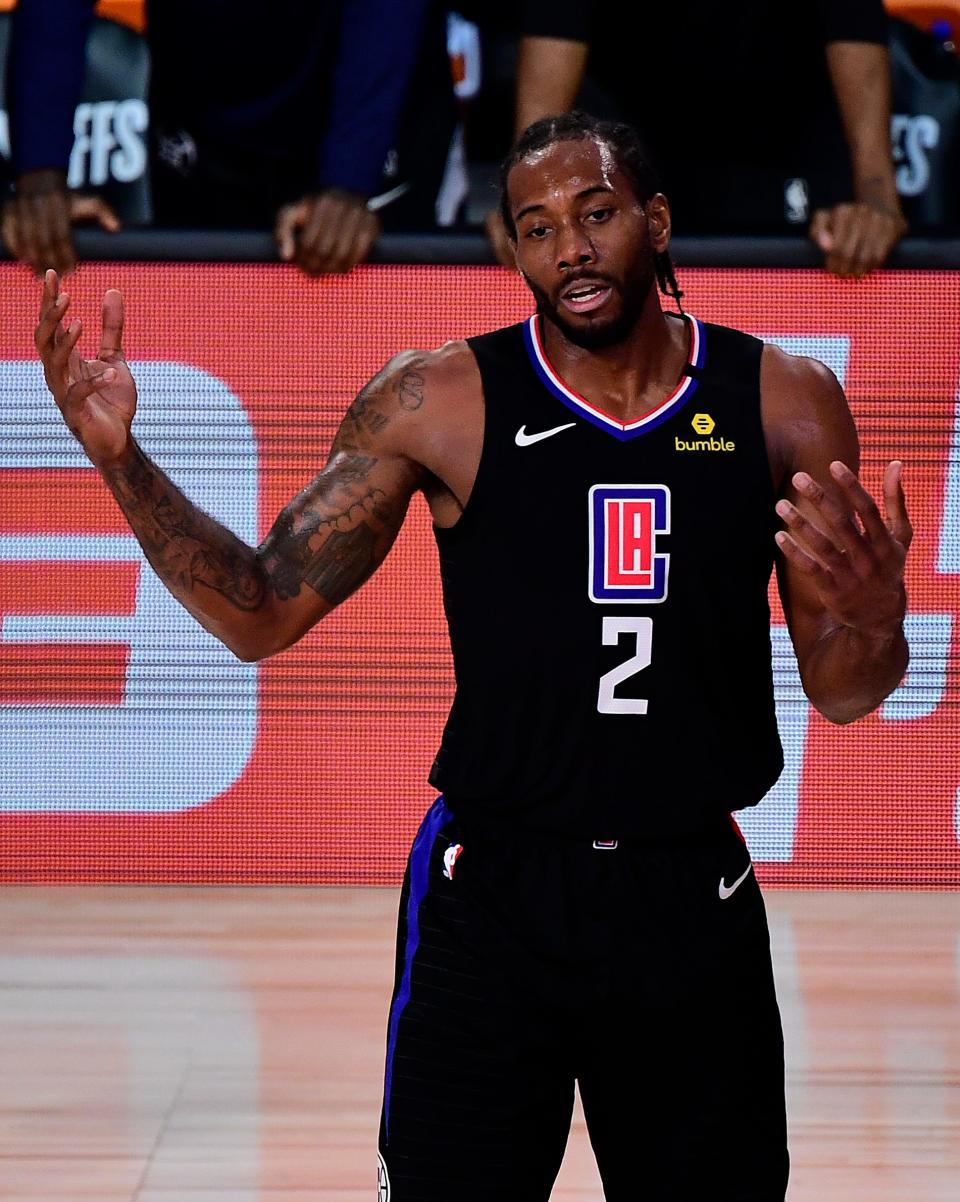
When the Clippers went up 3-1 in the Western Conference semifinal series against the Nuggets in 2020, there seemed little chance they could blow it. Right? Not with the self-proclaimed Playoff P (Paul George) and a two-time NBA Finals MVP (Kawhi Leonard). But the Clippers were the Clippers.
The meltdown began in Game 5, when they blew a 16-point lead. It continued in Game 6 with them wasting a 19-point lead. And it culminated in Game 7 with the Nuggets taking control in the third quarter and demoralizing the Clippers in the fourth.
Because of the collapse, Doc Rivers was fired and then took the 76ers’ head coaching position three days later. The Clippers then hired Rivers assistant and former Cavaliers coach Tyronn Lue, and the team retooled by bringing in Serge Ibaka, Luke Kennard and Nicolas Batum.
Finally, a Western Conference finals trip
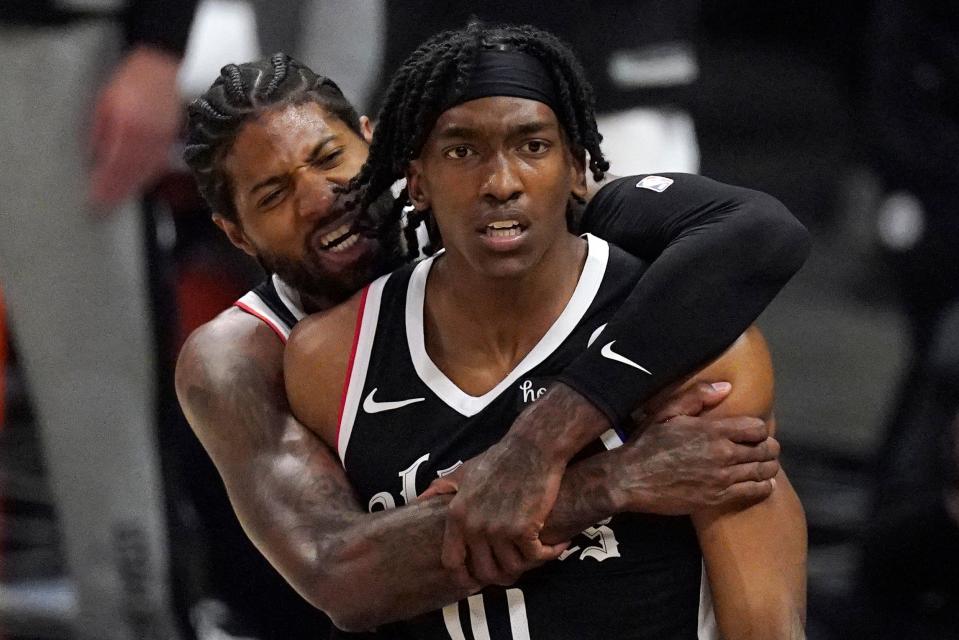
The first sign of certain trouble for the Clippers was when they dropped the first two games to the Utah Jazz. Led by Kawhi Leonard, they recovered nicely to tie the series. But while leading the way in Game 4, Leonard suffered a knee injury and hasn’t played since. That was clearly a second sign of deep trouble.
But stunningly, the Clippers completed a four-game win streak in the series in Game 6 after overcoming a 25-point deficit. And with that, they exorcised the so-called Clippers curse.
This article originally appeared on USA TODAY: Clippers, after years of ineptitude, reach new heights in NBA playoffs

